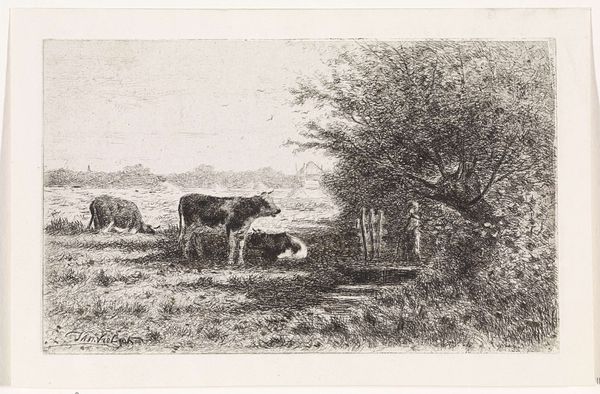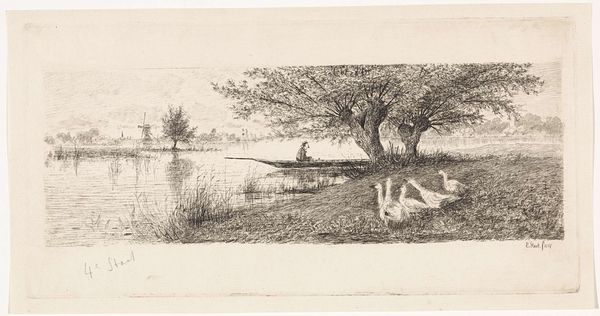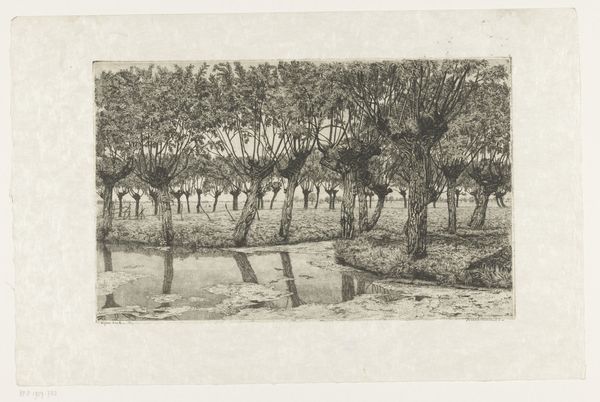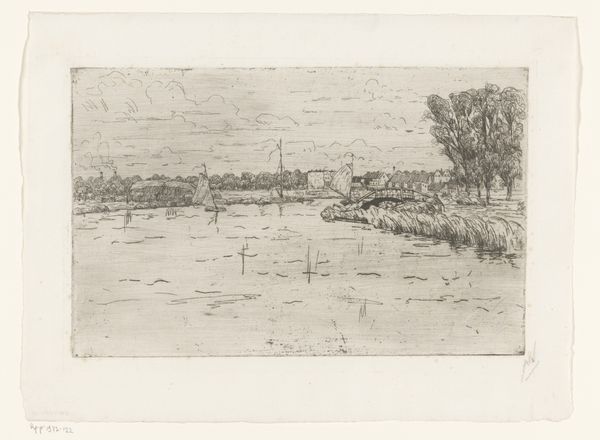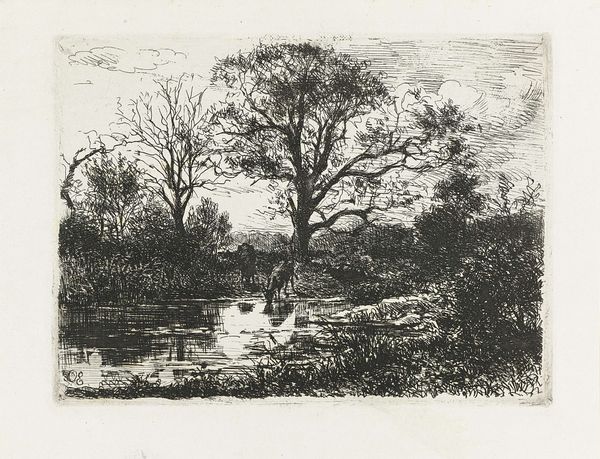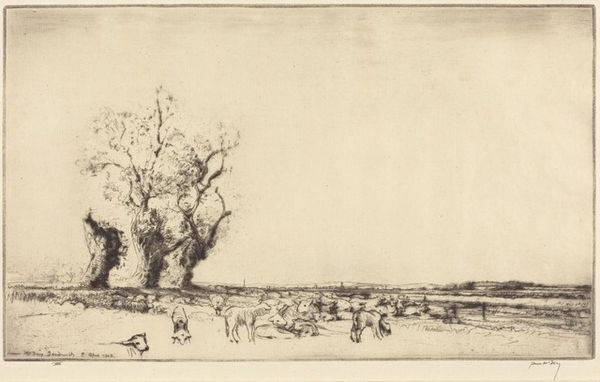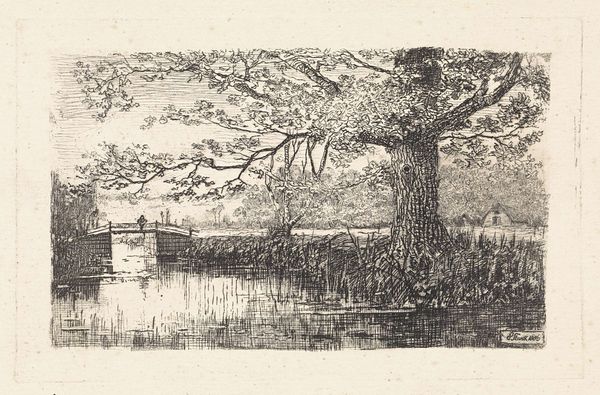
print, etching
#
still-life-photography
# print
#
etching
#
landscape
#
etching
#
genre-painting
#
realism
Dimensions: height 47 mm, width 79 mm
Copyright: Rijks Museum: Open Domain
Editor: So here we have "Landscape with Cows by a Water," made sometime between 1860 and 1894 by Jan Vrolijk, an etching on paper. It’s fascinating how much detail he gets with such a sparse technique. What strikes you most about this print? Curator: I immediately consider the process and labor involved. Etching requires skill, acid, and a press – each stage involving human intervention and control over materials. Think about Vrolijk selecting and preparing the copper plate, meticulously incising lines, the labor and material consumption inherent in each print made. Editor: I hadn't thought of it that way, focusing instead on the image. But it is interesting to think about. The "realism" tag makes me wonder, what was Vrolijk really trying to capture by focusing on cows grazing? Curator: Exactly. Realism in art wasn't just about depicting scenes accurately, but also about elevating everyday life – challenging the hierarchy that privileged historical and mythological subjects. What does it mean to assign value, and art status, to a scene of cattle at a watering hole? Who were the intended consumers, and how does this depiction affect our understanding of labor, rural life, and food production? Editor: That’s interesting… So instead of just seeing pretty cows, we can consider the broader cultural context of agricultural labor? Curator: Precisely. And by focusing on the etching process itself, we can explore how its materiality impacted distribution of those images within a capitalist market economy. Editor: It does make you consider art production outside of purely aesthetic terms. I am not sure I will be able to look at art the same way! Curator: Hopefully in new and productive ways!
Comments
No comments
Be the first to comment and join the conversation on the ultimate creative platform.


